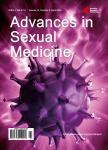Sexual Satisfaction Is Reduced in the Female Patient and Sexually Intimate Partners Following Cancer Therapy
Sexual Satisfaction Is Reduced in the Female Patient and Sexually Intimate Partners Following Cancer Therapy作者机构:Department of Obstetrics & Gynecology University of Cincinnati Cincinnati USA New York Fertility Services New York USA Department of Obstetrics & Gynecology University of Kentucky Lexington USA Department of Obstetrics & Gynecology Wright State University Dayton USA
出 版 物:《Advances in Sexual Medicine》 (性医学进展(英文))
年 卷 期:2014年第4卷第4期
页 面:65-70页
学科分类:1002[医学-临床医学] 100214[医学-肿瘤学] 10[医学]
主 题:Sexuality Sexual Dysfunction Female Cancer Cancer Treatment
摘 要:As cancer survival has continued to improve, cancer patients and their sexually intimate partner (SIP) are confronted with a number of issues including sexual function and overall sexual health. Our study objective was to assess changes in sexual function in women undergoing cancer treatment and their SIP, and attempt to identify areas of needed support and improvement. In this questionnaire-based observational study, females (n = 11) completed a Female Sexual Function Index (FSFI) and for SIP’s (n = 11), a Brief Sexual Function Inventory (BSFI). Level of satisfaction prior to and within 3 months following treatment with surgery, chemotherapy and/or radiation was compared. Mean pre-and post-treatment total (30.7 ± 2.7 vs. 23.2 ± 3.7, p 0.001) and individual FSFI domains were significantly different for desire (4.2 ± 0.6 vs. 2.6 ± 0.6, p 0.001), arousal (4.9 ± 0.4 vs. 3.5 ± 0.7, p = 0.001), lubrication (5.5 ± 0.4 vs. 4.5 ± 0.8, p = 0.006), orgasm (5.0 ± 0.6 vs. 3.8 ± 0.7, p = 0.001), satisfaction (5.3 ± 0.6 vs. 3.5 ± 0.9, p 0.001), though no differences were noted with dyspareunia. For SIP’s, BSFI domain scores for level of satisfaction were significantly lower following partner treatment of SIPs (3.5 ± 5.2 vs. 2.5 ± 5.2, p = 0.004). Overall, female sexual dysfunction was identified in 9% of patients prior to cancer treatment and 91% (n = 11, p 0.001) following treatment. In conclusion, cancer treatment significantly affects sexual function in female cancer patients and their SIPs. While long term effects on sexual dysfunction are still unclear, short-term health care strategies including treatment, counseling, and appropriate referral for cancer patients and their SIPs should not be overlooked.



